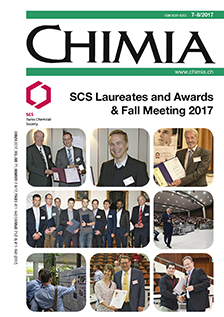Polysaccharide Derivatives as Unique Chiral Selectors for Enantioselective Chromatography
DOI:
https://doi.org/10.2533/chimia.2017.430Keywords:
Enantioselective chromatography, Stereoisomer discriminationAbstract
From the beginning of the 1980s, the life science industry increasingly recognized the importance of chirality in biological interaction processes, but the methods for preparing optically pure drugs were still limited. Most of the syntheses of chiral compounds were performed starting from optically active building blocks (chiral pool), mainly from natural sources, or by resolution of the enantiomers via formation of diastereomers. In this context, there was a growing interest for enantioselective processes, such as synthetic methodologies and separation techniques for accessing optically pure substances in an effective manner. Among the separation approaches, enantioselective chromatography looked very promising and a project aiming to explore this option was started in the Central Research Laboratories of former Ciba-Geigy. This article reviews the story of this development which culminated in the discovery of highly efficient polysaccharide-based chiral stationary phases which have now become the gold standard in the world of enantioselective chromatography. It shows also how the technique of enantioselective chromatography has evolved from an analytical tool to a practical preparative technology, up to production scale.Downloads
Published
2017-08-09
Issue
Section
Scientific Articles
License
Copyright (c) 2017 Swiss Chemical Society

This work is licensed under a Creative Commons Attribution-NonCommercial 4.0 International License.
How to Cite
[1]
Chimia 2017, 71, 430, DOI: 10.2533/chimia.2017.430.







